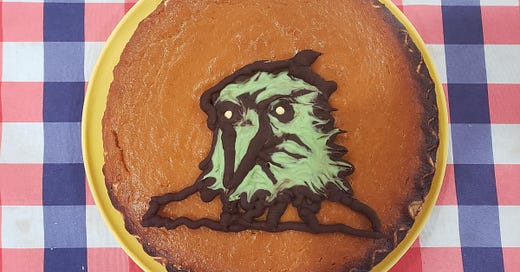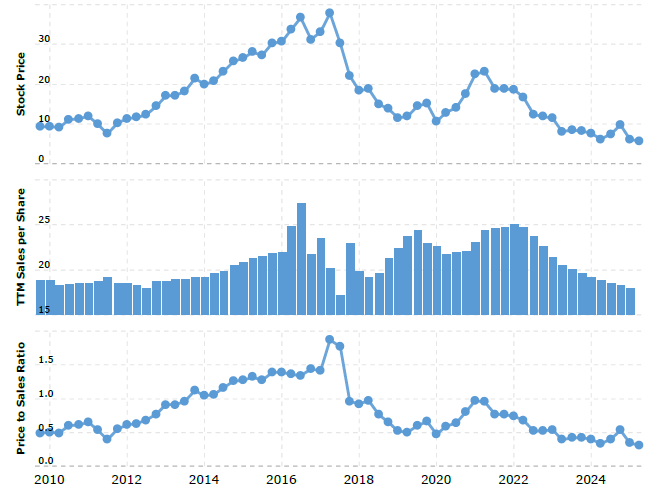Special thanks to my wife who made a pumpkin pie in support of my substack.
It’s finally a fun time in the markets, some things are working, some themes are being vindicated. The smart but difficult thing is to add to themes that are working. Momentum begets momentum, and winners tend to keep on winning until there is a change in market leadership. Those changes in leadership often take place at the beginning of the new year. Toward the end of the old year nobody wants to realize gains for the imminent tax year, and they tax-loss harvest the losers. But when January comes, wash sale windows lapse, some of those harvested losers are repurchased, and some of the past winners are sold for portfolio rebalancing. This gives a chance for a change of leadership.
The three lagging sectors are Real Estate, Healthcare, and Consumer Discretionary, and those are the areas that I’ll be focusing on because those are the stocks that are still cheap, and some are even still getting cheaper. That doesn’t mean that the time to purchase them is now, but they certainly deserve a place on your watchlist. And if the market looks about six months ahead, then maybe the time to buy them is getting closer.
In June of last year I wrote about Newell Brands (NWL), a brand conglomerate with the strongest insider buy signal I have ever seen, a $3 million purchase by the new CFO, Mark Erceg. Corporate insiders know their company better than anybody, but they frequently make mistakes with the cyclicality of their own business. In this instance, I don’t think a lot of people were prepared for Jerome Powell to keep rates as high as long as he did. The consumer discretionary recession started with the collapse in spending after the durable goods pull-forward of the Covid lockdowns, and it really suffered when the housing market froze after interest rates rose in 2022.
But one thing that stood out about Newell Brands was their strategy. The rising interest rates sent corporations across the world into cost-cutting mode. Management teams could be judged by how seriously they took the effort. Newell Brands stood out as a company that put together the right plan quickly, and executed it well. Following Nestle’s example, Newell cut their thinnest margin product lines. What once was 80 brands is now 55, and SKU count is down by 80%.
This aggressive cutting of low margin products was the right strategy, margins are up, and operating cash flow is up. But the algorithms see that revenue fell more than their peers, and continues to fall even when their peers have already started beating their easier comps. The algorithms are even more negative on Newell Brands as they are taking goodwill writedowns which drive the company into GAAP net income losses. But if you look past non-cash events, Newell is still cash flow positive, and has been during this entire share price drawdown.
Since Q3 of 2023, gross margin has expanded from 28.3% to 34.4%, and EBITDA grew by 25% year over year from 2023 to 2024. That is an incredible swing in profitability, especially when considering that the profitability has expanded on lower volumes. Typically we would expect economies of scale, so increasing margins by 610 basis points on a shrinking scale is very impressive. When the consumer discretionary cycle turns again, and Newell can enjoy increasing economies of scale, that number has room to improve even further. Just compare the charts for Revenue vs Gross Profit, while one is still in decline, the other is inflecting upward.
Revenue:
Gross Profit:
This is a case where I think the algorithm driven market is wrong about a company because the algorithms aren’t smart enough to understand the reason behind the numbers. We are in a consumer durables recession, and we would expect cyclical companies to have reduced revenues in this part of the cycle. Newell also executed the right strategy of firing their thinnest margin products, but this also reduced revenue further. A person can look past the numbers to see a management team executing at a high level with the right strategy, and a person can look past the cyclicality of the business. Their strategy is working, and when the cycle turns, those same algorithms that confused cyclicality for decline will confuse cyclicality for growth.
When will the cycle turn? Probably when the 30-year mortgage is below 5.5%, the housing market will unfreeze, and people will tap into home equity either when they change houses or through a home equity loan. That should get the economy running pretty hot, and it seems to be on track for starting in 2026 when Jerome Powell’s successor brings benchmark interest rates to 2.5% or lower. In the meantime, Newell’s stock will probably pop when they start providing positive comps year over year, and management is not guiding for that in 2025 due to tariff uncertainty. Management is guiding for earnings per share of about $0.75 this year, which is not too shabby on a $5.63 stock.
Speaking of tariffs, since 2017, Newell has been focusing on getting their manufacturing out of China, today less than 10% NWL products sold in the US is sourced from China, down from 35% a few years ago. Management believes that they will ultimately be a beneficiary of tariffs as they have extensive manufacturing already within the US, and they are large enough with production and sales in enough countries to shuffle things around and optimize in ways that many of their competitors can’t.
Putting a price target on Newell Brands isn’t easy. It’s hard to know what the next cyclical peak of revenue will be. Revenue was over $10 billion in 2017, 2018, and 2021, but the company has fired 80% of their SKUs and 25 out of 80 brands. Many of those products, however, were cannibalistic to other Newell Brands products, and the new management is reinvigorating research and development after the last team allowed things to go a bit stale. At one time Newell Brands was a $37 stock, trading at a price to sales ratio of 1.87x, but I don’t think those lofty heights can be reached within a couple of years. For one thing, capital allocation will be focused on paying down debt and on cash dividends. At these depressed prices, some share buybacks would go a long way, but that isn’t on management’s radar.
I think the most likely outcome is a return to a price to sales ratio of around 1.0x. If that occurs on $8 billion of revenue, NWL would be a $20 stock. If that occurs on $10 billion of revenue, NWL would be a $24 stock. That could come as early as 2027 if the Fed Chair after Powell really does overheat the economy by flooding it with money at 2.5%. Until then, NWL belongs on the watchlist. I intend to start adding whenever the things that are working now start to lose momentum.
Newell Brands (NWL) $5.62: $20 by the end of 2027










theyve moved a lot out of china. which product lines are still produced abroad, and in what countries? we've just seen vietnam agree to a 20% tariff; we await word on other countries. and who are their competitors for their most important brands, and where do those competitors manufacture? i realize the answers to these questions might not be readily at hand, but i wonder if you have any visibility on them.
ive been following this for a while; im continuously reminded of LCUT when doing so, & i wonder what the strength of their respective brands are - do u have a feel?. SharkNinja shows what can be achieved. They are often perceived as middlemen somehow caught between the retailers and the suppliers without a safety valve.
& oh yes delicious pumpkin pie.